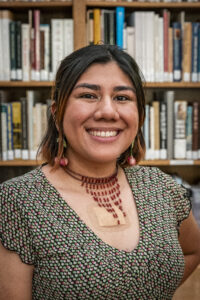This post is part of our blog series “Scholars Speak,” which features writing from our 2024 cohort of Preservation Scholars. Click the link to learn more about this donor-funded program that aims to increase the breadth of voices in the Texas historical narrative by placing students from underrepresented cultural and ethnic backgrounds in paid, 10-week long summer internship positions at the Texas Historical Commission.
Scholars Speak: Welcome Home – From Historical Building to Public Housing

Since 1938, housing projects have been an integral part of Brownsville’s history, marked by the establishment of the Housing Authority of the City of Brownsville (HACB). This initiative was in response to President Roosevelt’s U.S. Housing Act of 1937, which aimed to provide economic security to Americans. In a State of the Union address, President Roosevelt aimed to establish the notion that housing is a right, not a need, declaring in his statement “the right of every family to have a decent home.”
In 2005, my family moved into the Victoria Gardens projects, one of the many housing developments around Brownsville, marking the beginning of our new life in the United States and a new chapter of my journey. The projects did more than provide me with a decent home; they gave me access to a tight-knit community where I formed some of my most significant childhood friendships and had access to educational programs that supported me throughout my academic journey up to university. Through these experiences, I learned that living in the projects transcended my economic status and provided me with cherished memories.
While working on a project during my graduate program, I discovered that there is currently not enough housing to meet the demands of the community, resulting in delays for many applicants. Enter El Jardin Hotel, a historic hotel located in downtown Brownsville built in 1927, which once served as the social centerpiece of the city. This hotel was famous for hosting numerous Hollywood stars and other famous guests, such as Amelia Earhart. The hotel operated until the 1980s when it fell on hard times due to lack of guests and was forced to close its doors. Since then, the hotel has deteriorated with no public access.
In 2019, HACB purchased the building with the goal of revitalizing it and converting it into public housing units. The acquisition of this building would help alleviate the high demands for affordable housing, offering the applicants on the waiting list with a safe and affordable place to live. A promise made in 1937 continues to be fulfilled through HACB’s efforts to expand their services to the community for generations to come, utilizing historical buildings to revitalize areas in downtown Brownsville that were once the epicenter of the city.
Historical revitalization is about more than just preserving history; it is also about creating spaces where past and new stories can coexist, creating a blend of the old and the contemporary. Next time you take a stroll through your city, observe the older places that now provide new and different uses and reflect on their contributions to your community.